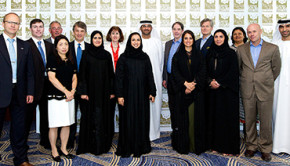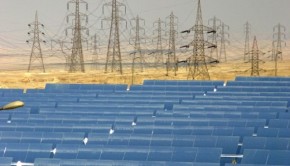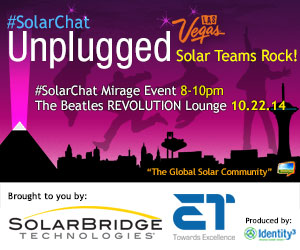The Solar Energy Revolution Everyone’s Ignoring… Is In Bangladesh
October 25th, 2014 by Zachary Shahan
We put a lot of cyber ink into the German, Australian, US, Chinese, Indian, Chilean, and Japanese solar energy revolutions. However, I think the Bangladeshi solar revolution is one we don’t write about enough. One of the biggest reasons for that is probably that it doesn’t compare to the others on a total capacity basis. However, that doesn’t mean the market isn’t huge.
In July, we did write about a $78.4 million World Bank loan offered to the Bangladeshi government to finance 480,000 solar home systems. Assuming 5.6 people per household (that’s apparently the average), that’s solar power for 2.688 million people. However, this isn’t the beginning of Bagladesh’s solar revolution at all.
By the end of 2010, Grameen Shakti had already installed over 500,000 home solar power systems (or 518,210, to be more exact). Using the same people-per-household assumption as above, that’s solar for about 2.9 million people. But that was years ago….
Now, Grameen Shakti (a nonprofit organization based in Bangladesh) has brought solar power systems to about 1.5 million Bangladeshi homes, or about 8.4 million people!
“Mr Barua and Mr Yunus founded microfinance institution Grameen Bank way back in 1983,” Sustainnovate writes. Its innovative efforts to fight poverty won it a Nobel Peace Prize in 2006. “But it was Grameen Shakti, founded in 1996, that took the work Grameen Bank was doing to the next level and enabled the deployment of much more solar, biomass, and other clean technologies in Bangladesh.”
Approximately 360,000 households have now paid off the systems Grameen Shakti provided to them. And the total number of people who have benefited from Grameen Shakti’s social enterprise is estimated to be over 15 million.
Aside from providing the systems to households, Grameen Shakti “also provides training and capacity development and has created 45 ‘Grameen Technology Centers.'” Grameen Shakti writes:
GS has set up 45 Grameen Technology Centers (GTC) under a pilot program to scale up its solar program, specially production of [solar home system (SHS)] accessories by manufacturing these locally. GTCs are also contributing to women empowerment by developing Solar Technicians. GS will help these technicians sign annual contracts with its clients for after sales maintenance and become entrepreneurs in the future.
More than 60 thousand people each year are installing SHSs all over Bangladesh for business or household purposes…. GS envisages a future where there would be a huge demand for SHS accessories as well as maintenance services to keep the installed SHSs in working order. GTCs are also running a very successful Renewable Energy Exposure Program for rural school children and more than 5000 school children have participated in the program.
Sadly, Grameen Shakti somehow wasn’t even on my radar until I found out that it was a recent Zayed Future Energy Prize finalist. And it probably still wouldn’t be if it weren’t for that? Honestly, how does an organization providing solar to about 10 million fly under the radar? My hunch is that there are a few reasons: 1) these are very small systems, so they don’t as quickly add up to “a lot” even though they are providing electricity to many more people than solar is in the US; 2) the small systems might not even be counted in many global assessments of solar power capacity and generation; 3) Bangladesh is an infrequently discussed country in global news, whether it’s cleantech news, massive flooding news, tragic global warming news, or otherwise. But without a doubt, a solar revolution is afoot in Bangladesh, and it’s a big deal.
Aside from solar, Grameen Shakti “has also delivered 28,762 biogas plants to Bangladeshi communities and 814,562 clean cooking stoves to Bangladeshi homes. It has 1,268 branches covering every district in Bangladesh,” and “Mr Barua, the first winner of the Zayed Future Energy Prize, is also the Chairman & CEO of the Bright Green Energy Foundation,” which does almost the same work, with its own impressive track record!
And, of course, there are other organizations and companies bringing solar to Bangladeshi households and businesses.
Granted, Bangladesh has a population of about 156 million, nearly half of the United States. Still, bringing solar to tens of millions of people is a big deal. Even if we just say 20 million people in Bangladesh have received home solar systems, that’s about 13% of the population. And monthly solar installations are approaching 100,000. That’s insane, in a good way.
So, here’s a big nod of appreciation to the companies, organizations, and people bringing solar to millions of Bangladeshi! As I’ve stated before many times (for example, in an interview on CNBC back in 2010), just as cell phones leapfrogged landlines in the developing world, distributed solar power (and other renewables, to a lesser extent) are leapfrogging centralized, expensive grids based around fossil fuel and nuclear power plants, but this transition still needs to have leaders.
After learning much more about the Bangladeshi solar revolution, I wonder how much small-scale solar growth is occurring under the radar in other developing countries. There are dozens and dozens of solar organizations and companies serving developing countries. How well is their progress really being tracked? How fast is this decentralized solar revolution actually growing?
Keep up to date with all the hottest cleantech news by subscribing to our (free) cleantech newsletter, or keep an eye on sector-specific news by getting our (also free) solar energy newsletter, electric vehicle newsletter, or wind energy newsletter.
-
John Smith
-
Bob_Wallace
-
John Smith
-
Bob_Wallace
-
-
-
-
GeorgeMokray
-
http://solarmarket.in/ anand upadhyay
-
BtotheT
-
tibi stibi
-
Larmion
-
http://zacharyshahan.com/ Zachary Shahan
-
-
-
David in Bushwick
-
http://zacharyshahan.com/ Zachary Shahan
-
-
Offgridman
-
Bob_Wallace
-
Offgridman
-
http://zacharyshahan.com/ Zachary Shahan
-
-
http://zacharyshahan.com/ Zachary Shahan
-
Offgridman
-
http://solarmarket.in/ anand upadhyay
-
-
-
Dragon
-
Offgridman
-
Dragon
-
Offgridman
-
-
-
Philip W
-
-
-
Bob_Wallace
-
http://zacharyshahan.com/ Zachary Shahan
-
-
David Zarembka
-
Bob_Wallace
-
Jay1000
-
Bob_Wallace
-
Robert Pollock
-
-
John Smith
-
Wayne Williamson
-
-
-
http://zacharyshahan.com/ Zachary Shahan
-
Mint
-
Bob_Wallace
-
-
Robert Pollock
-





























